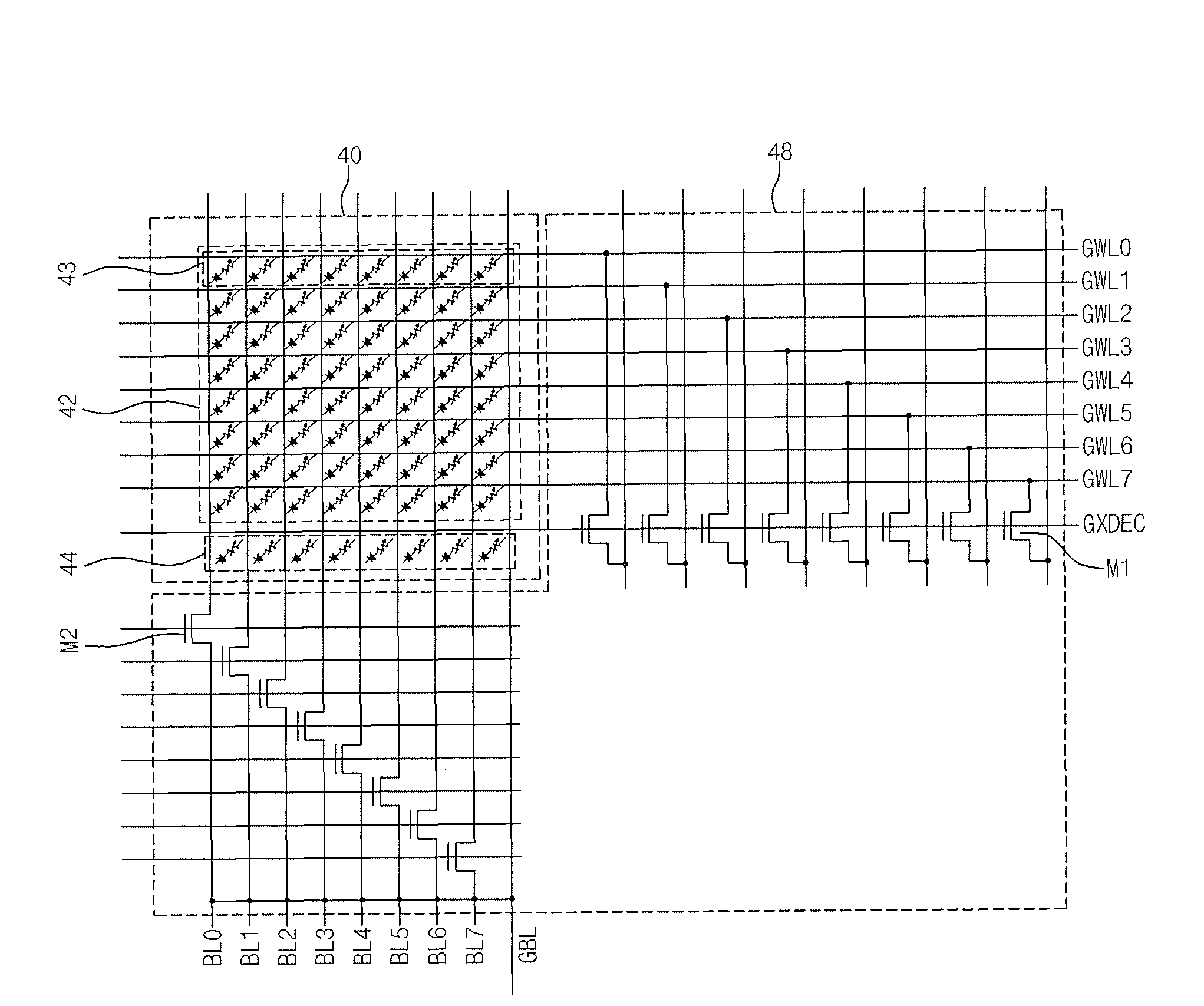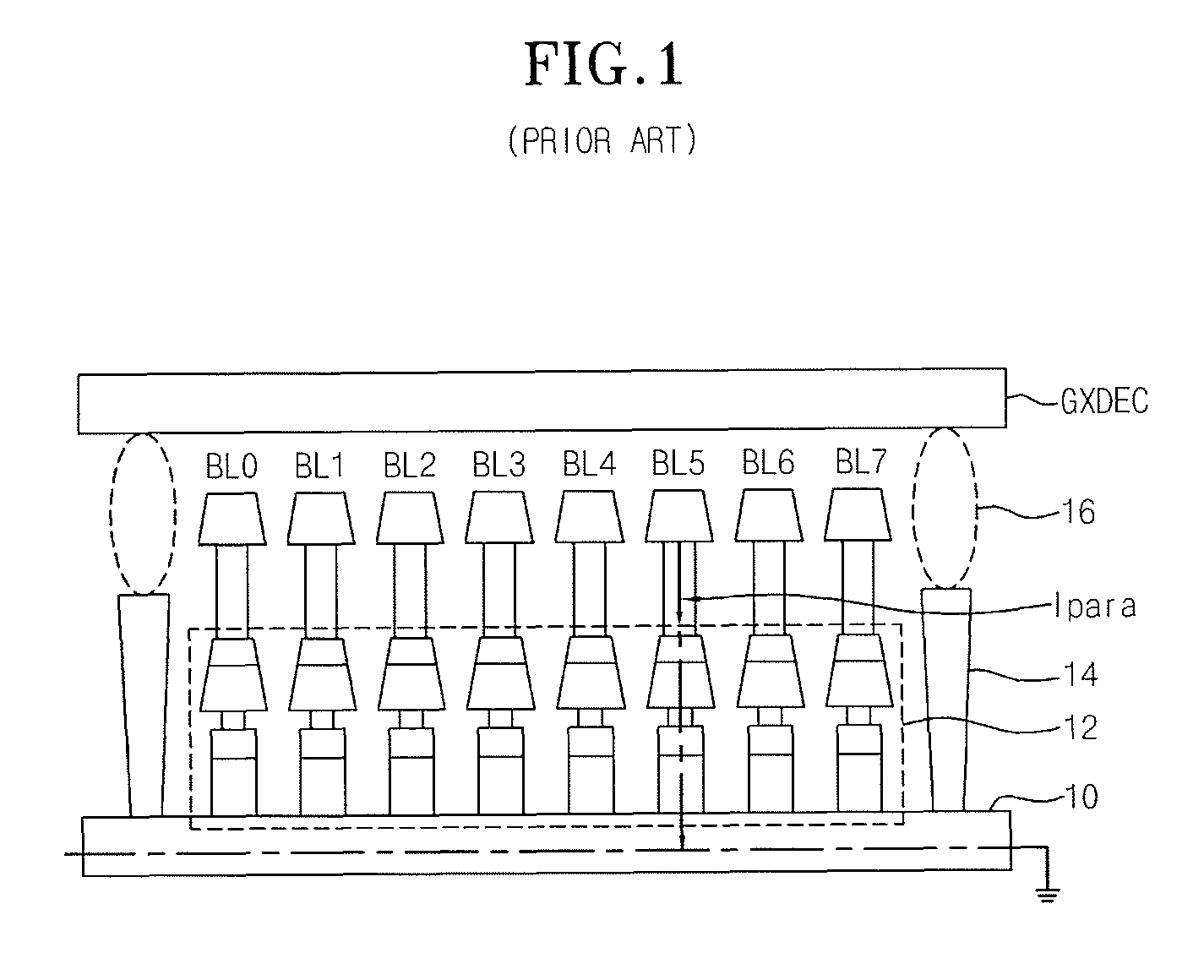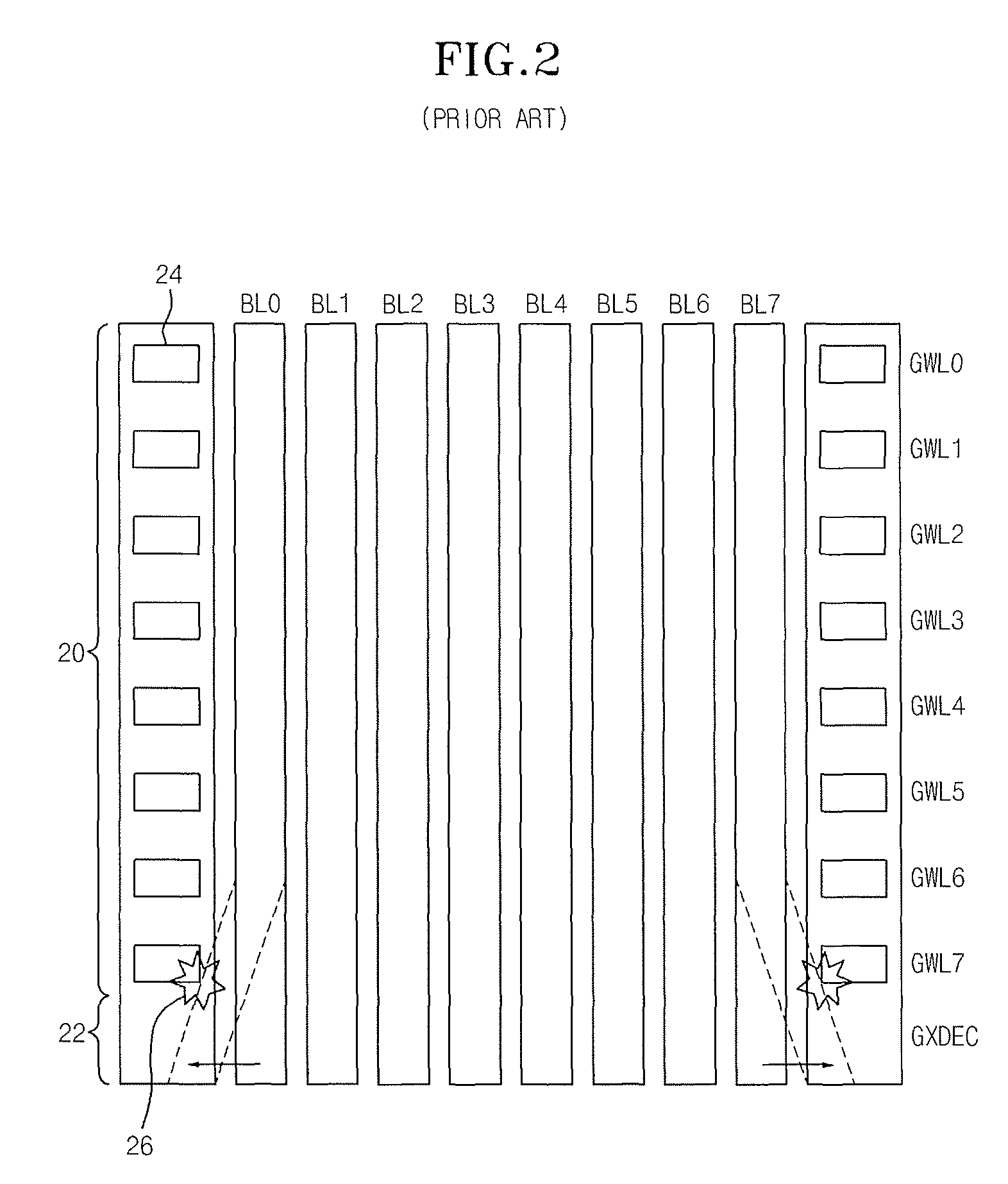Phase change random access memory and layout method of the same
a random access memory and phase change technology, applied in the field of phase change random access memory (pram), can solve the problems of data access error, data access error, and difficulty in distinguishing between ‘1’ and ‘0’ in the data, so as to prevent data access error, prevent collapse of outermost bitlines, and remove parasitic current
- Summary
- Abstract
- Description
- Claims
- Application Information
AI Technical Summary
Benefits of technology
Problems solved by technology
Method used
Image
Examples
Embodiment Construction
[0079]Hereinafter, preferred embodiments of the present invention will be described in detail with reference to the accompanying drawings.
[0080]In one embodiment of the present invention, a PRAM in which dummy cells and bitlines are electrically isolated from each other and regions of the bitlines disposed at the outermost in a cell array region, corresponding to the dummy cell, are extended to the outside and which is thus capable of removing parasitic current due to the dummy cells and preventing collapse of the outermost bitlines is disclosed.
[0081]Specifically, according to the present embodiment, the PRAM includes a plurality of cell array units, each of which may include a cell array 40 and a cell array control unit 48 as shown in FIG. 4.
[0082]The cell array 40 includes a plurality of memory cell strings 42 and at least one dummy cell string 44.
[0083]Herein, each memory cell string 43 includes phase change memory cells. The phase change memory cells are arranged in the region ...
PUM
 Login to View More
Login to View More Abstract
Description
Claims
Application Information
 Login to View More
Login to View More - R&D
- Intellectual Property
- Life Sciences
- Materials
- Tech Scout
- Unparalleled Data Quality
- Higher Quality Content
- 60% Fewer Hallucinations
Browse by: Latest US Patents, China's latest patents, Technical Efficacy Thesaurus, Application Domain, Technology Topic, Popular Technical Reports.
© 2025 PatSnap. All rights reserved.Legal|Privacy policy|Modern Slavery Act Transparency Statement|Sitemap|About US| Contact US: help@patsnap.com



